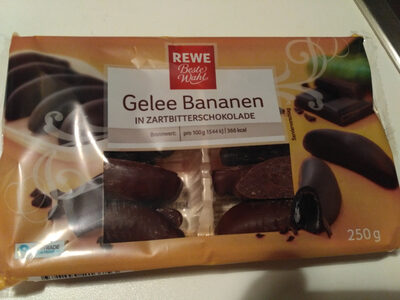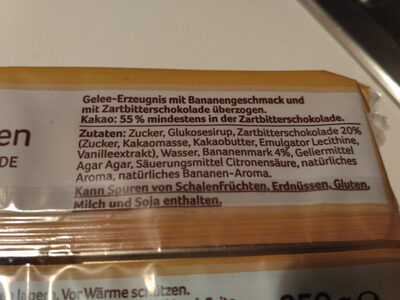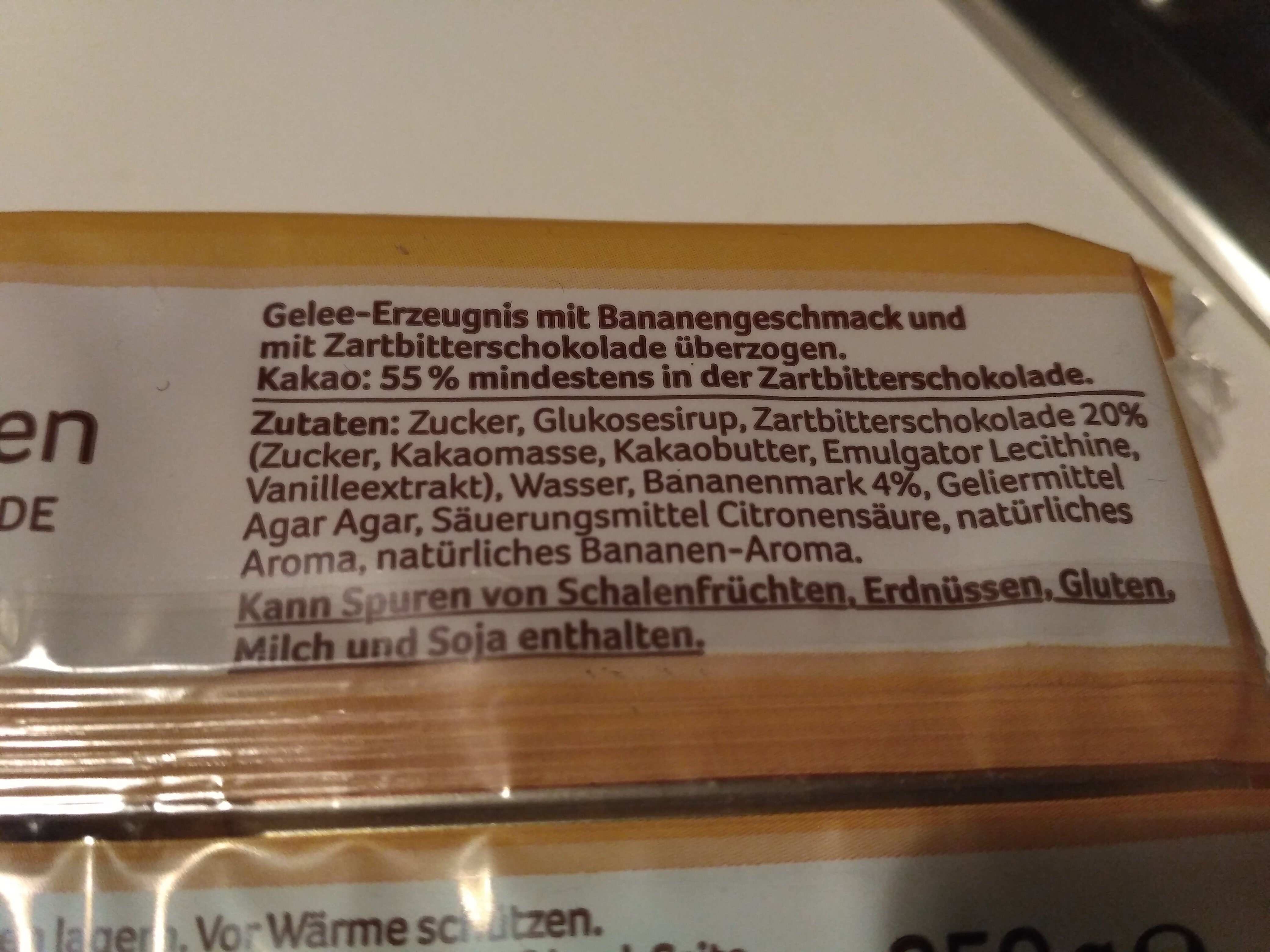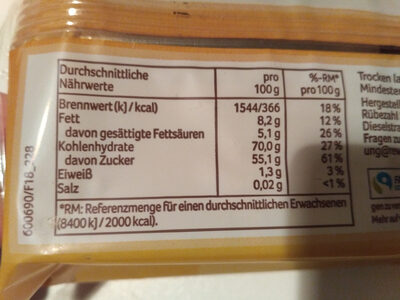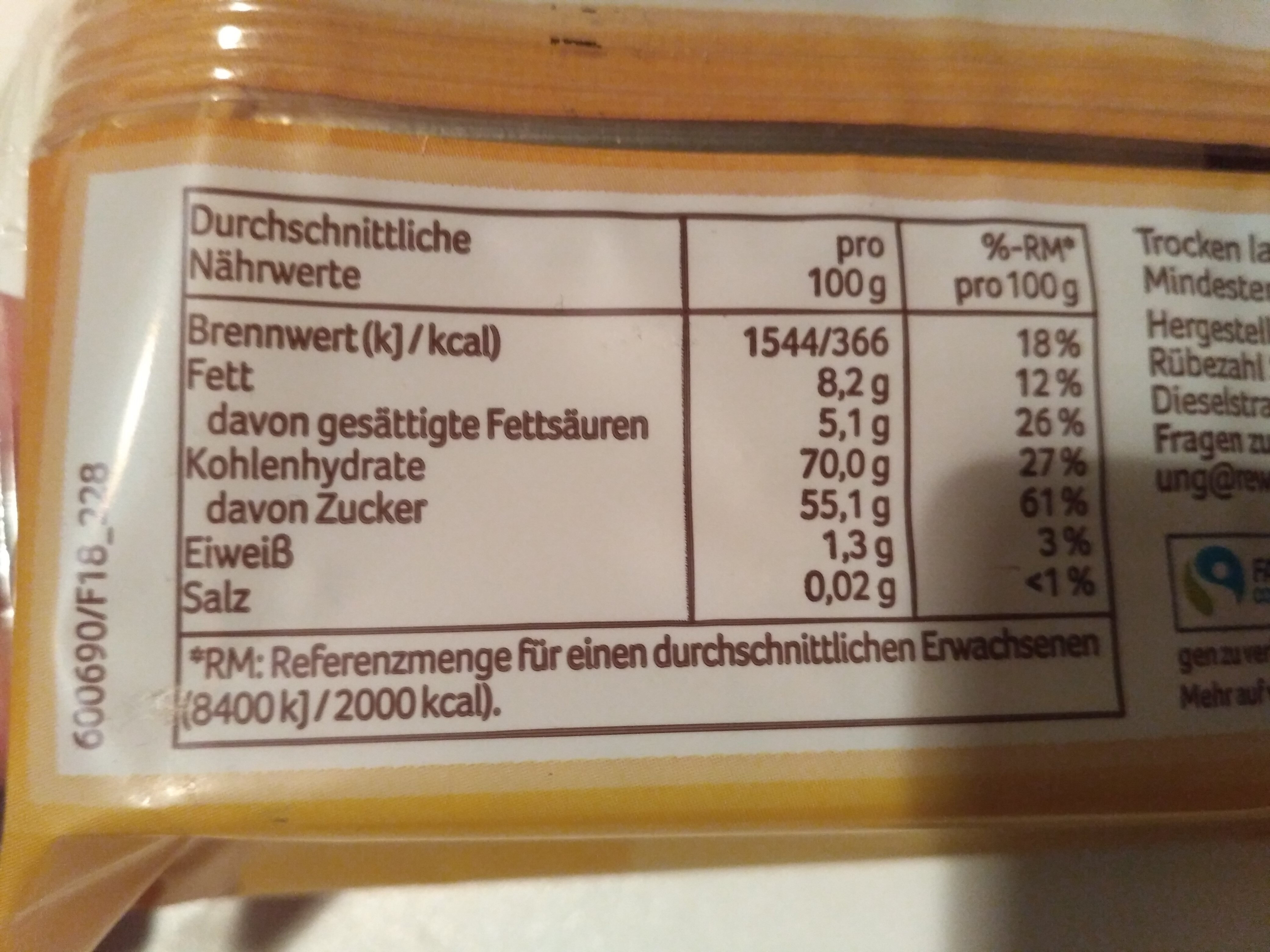Gelee Bananen in Zartbitterschokolade - REWE Beste Wahl - 250g
This product page is not complete. You can help to complete it by editing it and adding more data from the photos we have, or by taking more photos using the app for Android or iPhone/iPad. Thank you!
×
Barcode: 4388844213753 (EAN / EAN-13)
Quantity: 250g
Packaging: Plastic
Brands: REWE Beste Wahl
Categories: Snacks, Sweet snacks, Confectioneries
Labels, certifications, awards: Fair trade
Stores: REWE
Countries where sold: Germany
Matching with your preferences
Environment
Packaging
Transportation
Report a problem
Data sources
Product added on by meatpuppet
Last edit of product page on by packbot.
Product page also edited by openfoodfacts-contributors, roboto-app, rochus.
If the data is incomplete or incorrect, you can complete or correct it by editing this page.
